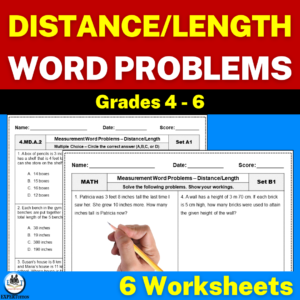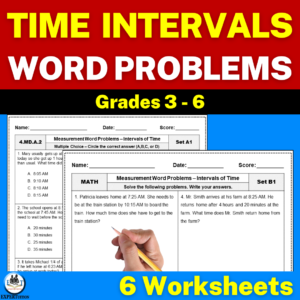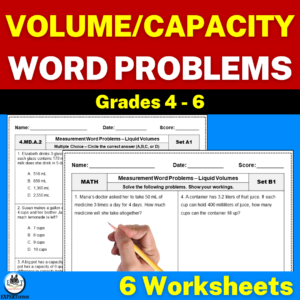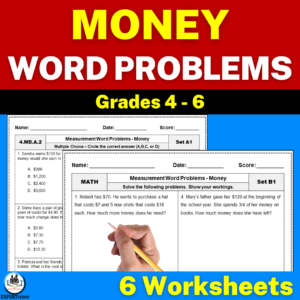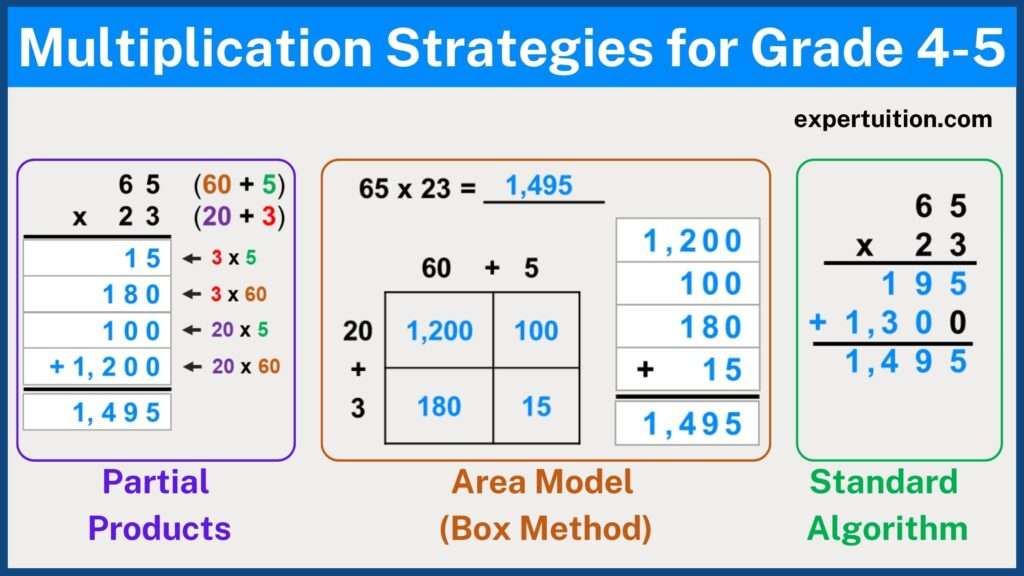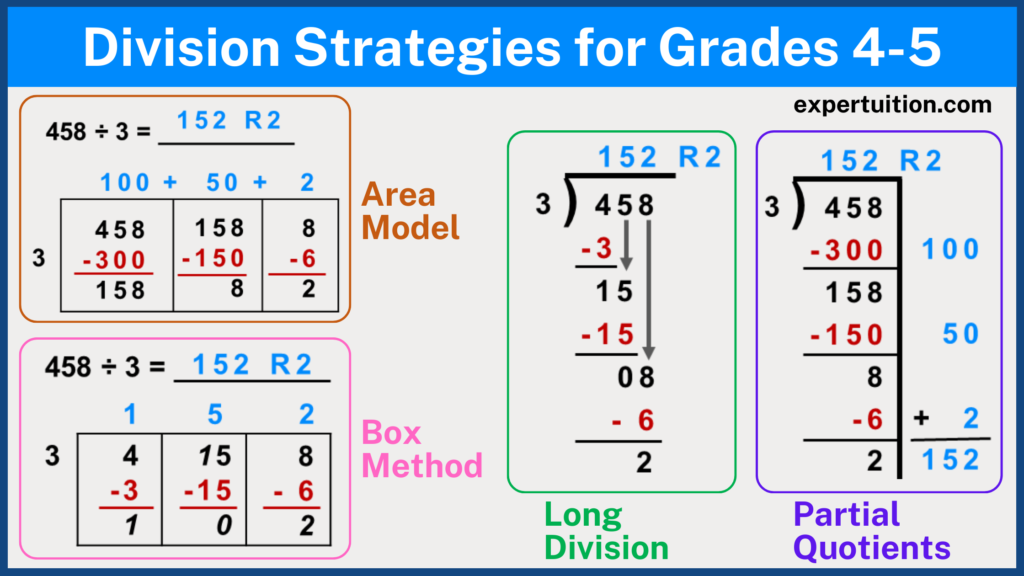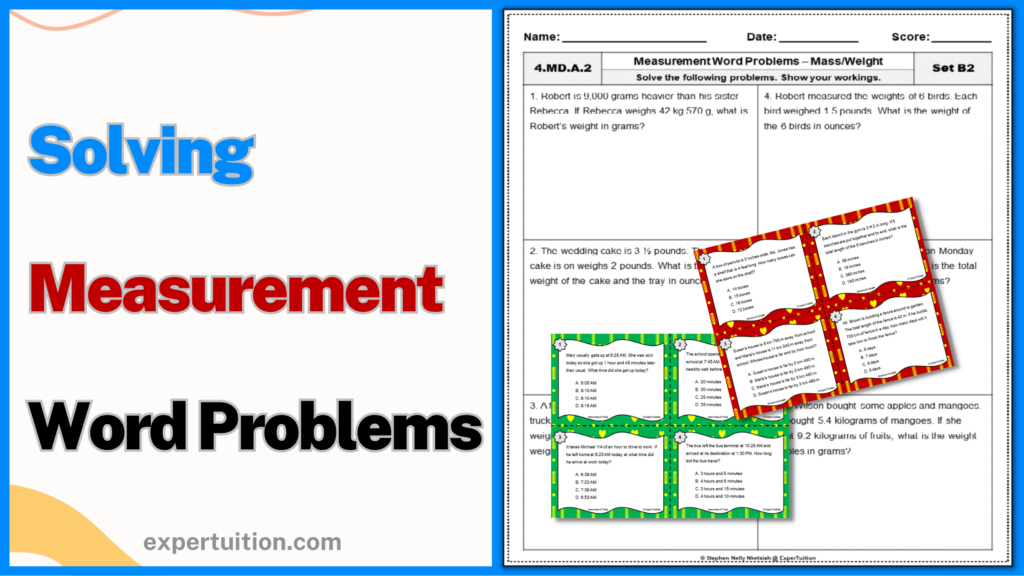
Measurement word problems can appear daunting at first, but with the right approach and resources, they can be turned into manageable challenges that help students improve their math and critical thinking skills. This article delves into an effective strategy for solving measurement word problems with practice examples and resources tailored for fourth and fifth grade students.
Measurement Word Problems
Solving measurement word problems is an important part of elementary math education because it helps students understand the practical applications of measurements in everyday life.
Measurement word problems may involve converting lengths, interpreting time intervals, converting liquid volumes, or solving mass and weight problems.
Solving these problems helps students improve their critical thinking skills while also reinforcing their knowledge of units and conversions.
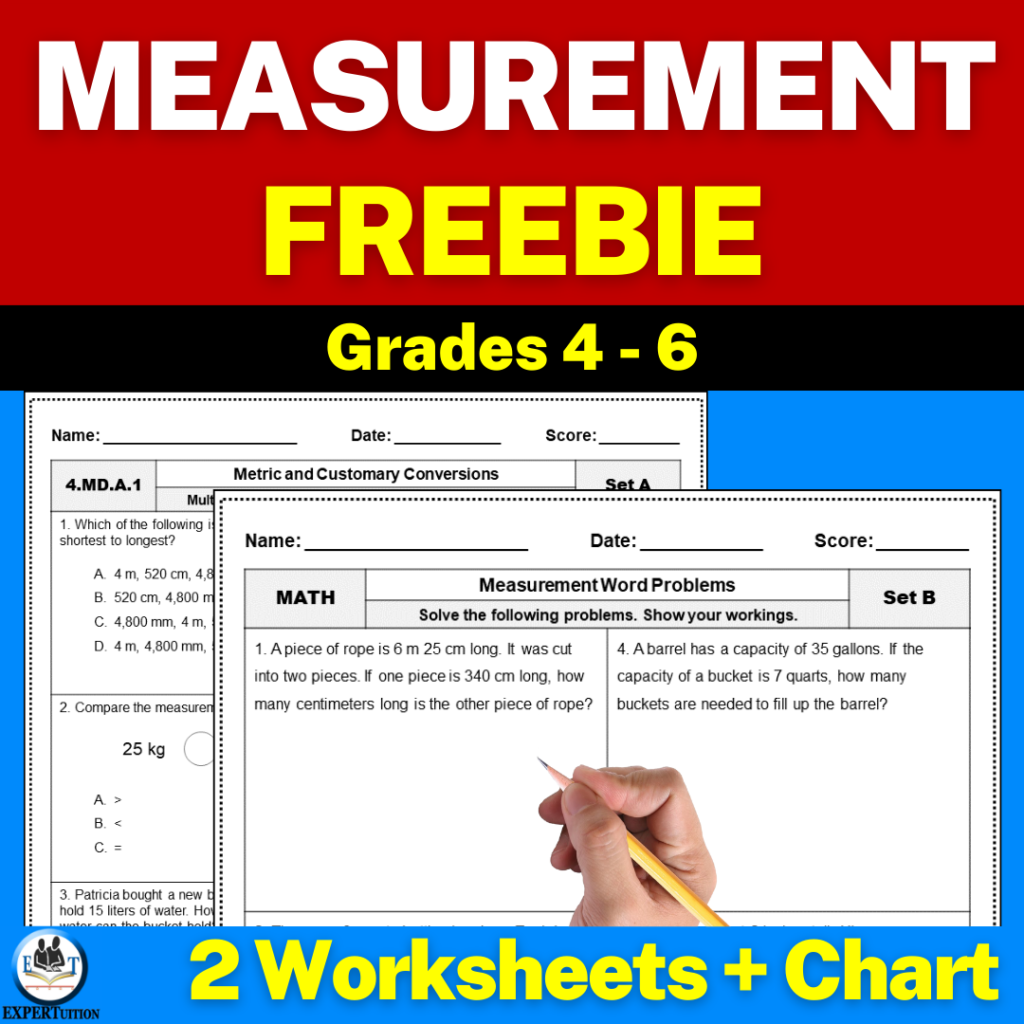
Join my email list and download freebies from my Free Resource Library.
Strategy for Solving Measurement Word Problems
The outlined approach can be used to master measurement word problems.
- Identify the units involved
- Understand conversion between the units
- Solve the problem ensuring correct unit expression
- Practice by solving more measurement word problems
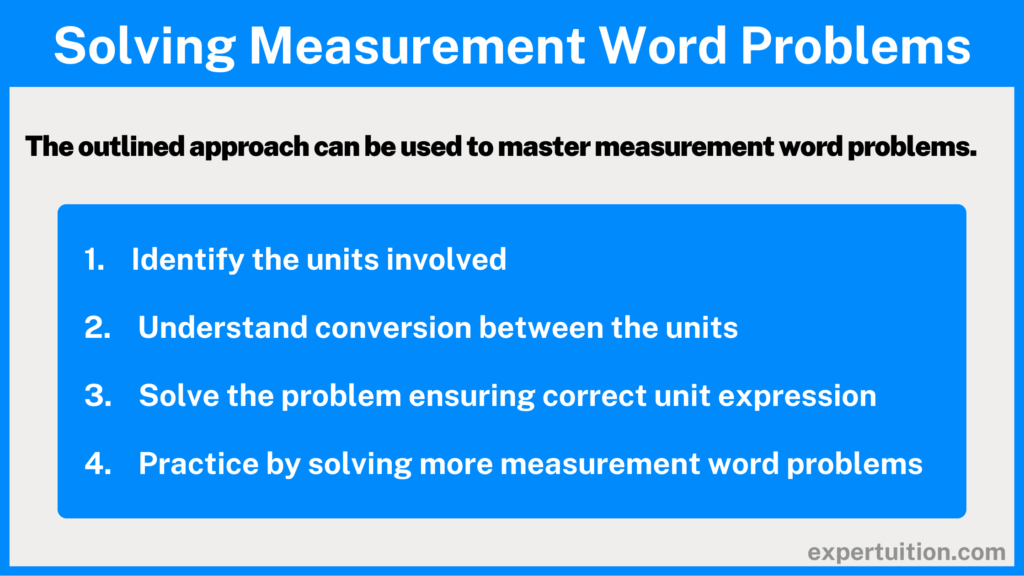
Identify the Units Involved
The first step in solving measurement word problems is identifying the units involved.
Understanding the units used, whether they are lengths, time intervals, liquid volumes, masses and weights, or monetary values, is critical for accurate problem-solving.
Understand Conversion Between the Units
Conversion between measurement units is an important part of solving measurement word problems.
Students should be familiar with conversion factors and understand how to convert between different units within the same measurement system (customary or metric).
Solve the Problem Ensuring Correct Unit Expression
Students can solve the problem once the units have been identified and the conversions understood.
When solving problems, it is important to ensure that the final answer is expressed in the correct unit specified in the problem.
This promotes clarity and accuracy in communication.
Practice By Solving More Measurement Word Problems
Like any skill, practice is key to mastery. Regular practice with diverse problem sets is key to mastering measurement word problems.
Encouraging students to solve a variety of measurement word problems not only reinforces their understanding of the concepts but also increases their confidence in applying them to different scenarios.
Regular practice helps students develop fluency in applying their knowledge and skills to real-world situations.
Let’s put this strategy into action
Problem:
Steve traveled 3 kilometers on Monday and 2,500 meters on Tuesday. How many meters farther did he travel on Monday than on Tuesday?
Solution:
Identify the units: Kilometers and meters.
Understand the conversion: 1 kilometer = 1,000 meters.
3 kilometers = 3 × 1,000 = 3,000 meters.
Solve the problem: 3,000 – 2,500 = 500 meters.
Answer: Steve traveled 500 meters farther on Monday than on Tuesday.

Now let’s look at the examples below for more practice.
Measurement Word Problems Practice Examples
Length Word Problems
Example 1:
Brian has a piece of rope that is 3 meters long. He wants to cut it into 5 equal lengths. How many centimeters long will each piece of rope be?
Solution:
1 m = 100 cm
3 m = 3 x 100 cm = 300 cm
300 cm ÷ 5 = 60 cm
Answer: Each piece of rope will be 60 cm long
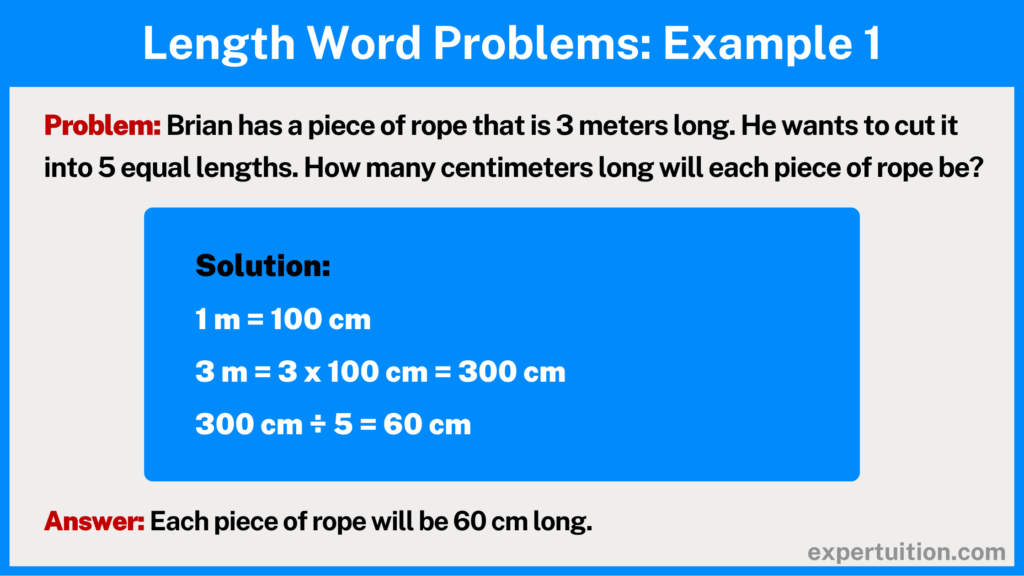
Example 2:
Stephen was 4 feet 8 inches tall the last time he visited his grandparents. He grew 10 inches taller before his next visit. How tall was Stephen in inches during his next visit?
Solution:
1 ft = 12 in
4ft = 4 x 12 in = 48 in
48 in + 8 in + 10 in = 66 in
Answer: Stephen was 66 inches tall during his next visit.

Time Intervals Word Problems
Example 1:
Patricia leaves home at 7:00 AM. She needs to be at the train station by 8:25 AM to board the train. How many minutes does she have to get to the train station?
Solution:
7:00 AM to 8:25 AM = 1 hour 25 minutes
1 hour = 60 minutes
60 + 25 = 85 minutes
Answer: She has 85 minutes to get to the train station.
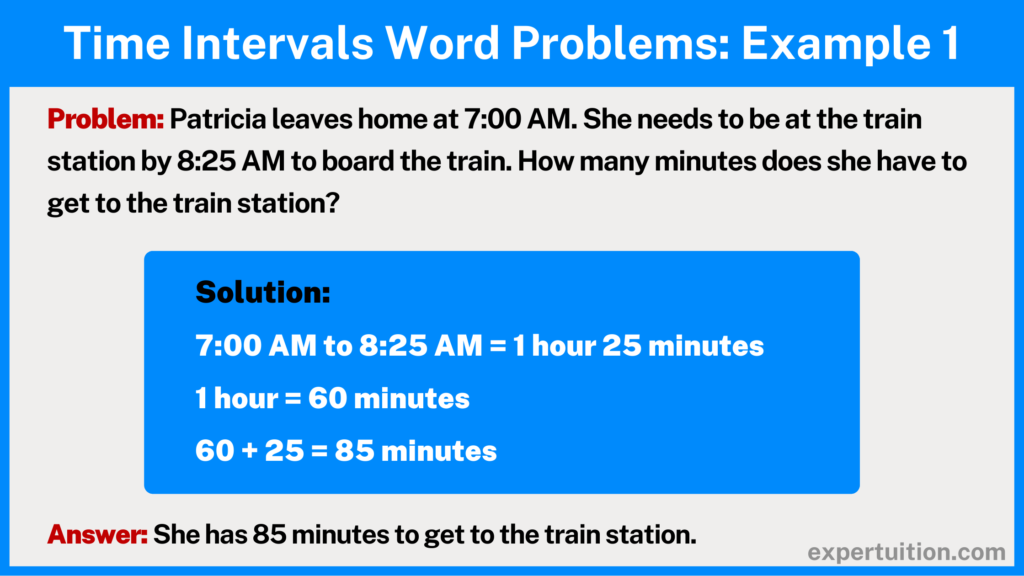
Example 2:
John left his home at 2:30 PM. He arrived at his parent’s house at 4:30 PM and waited for another 15 minutes before his parents came home to meet him. How many minutes long was it from the time he left his home until he met his parents?
Solution:
2:30 PM to 4:30 PM = 2 hours
1 hour = 60 minutes
2 hours = 2 x 60 = 120 minutes
120 + 15 = 135 minutes
Answer: It was 135 minutes long from the time he left his home until he met his parents.
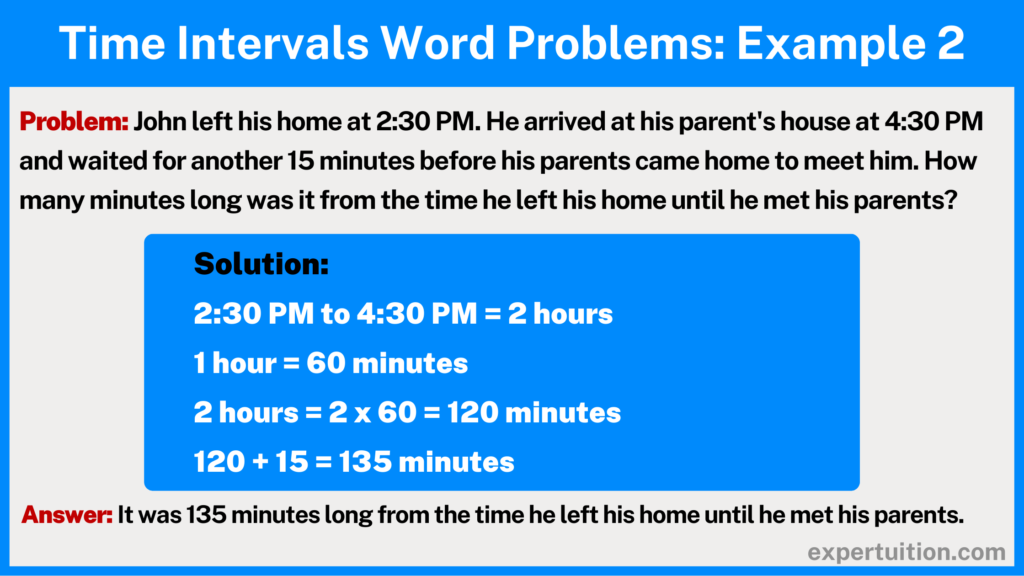
Liquid Volumes Word Problems
Example 1:
There was 3 L of oil in a container. After filling 4 bottles, there is 600 mL left in the container. If each bottle was filled with an equal amount, how many milliliters of oil is there in each bottle?
Solution:
1 L = 1,000 mL
3 L = 3 x 1,000 = 3,000 mL
3,000 mL – 600 mL = 2,400 mL
2,400 ÷ 4 = 600 mL
Answer: There is 600 mL of oil in each bottle.
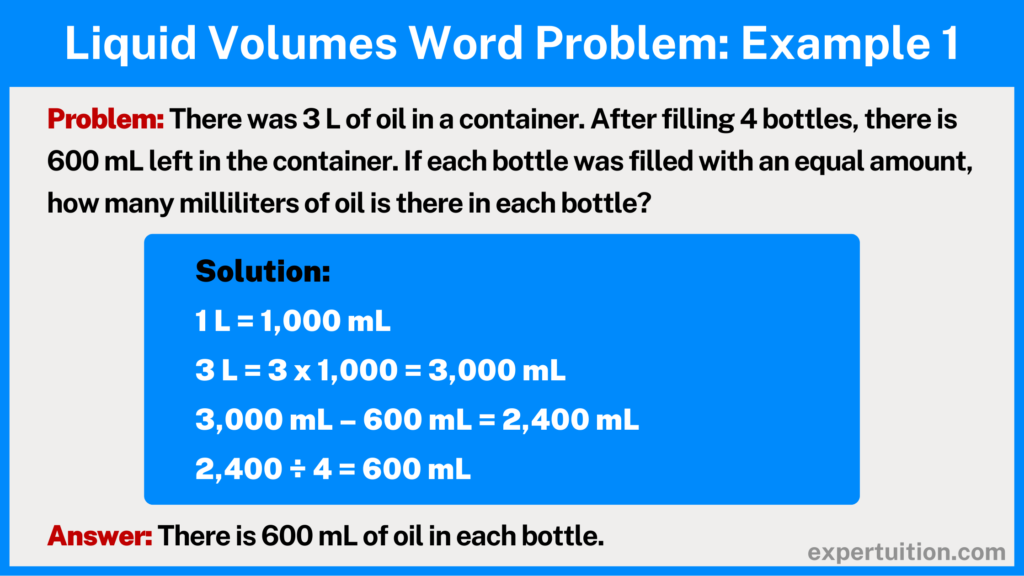
Example 2:
Lisa and her friends bought some chocolate ice cream. They ate 15 cups of ice cream. If they have 3 quarts of ice cream left, how many cups of chocolate ice cream did they buy?
Solution:
1 quart = 4 cups
3 quarts = 3 x 4 = 12 cups
12 cups + 15 cups = 27 cups
Answer: They bought 27 cups of chocolate ice cream.

Mass and Weight Word Problems
Example 1:
A farmer is loading 2 sacks of potatoes into his truck. Together the sacks weigh 106 kg. If 1 sack weighs 64 kg, how much does the other sack weigh in grams?
Solution:
106 kg – 64 kg = 42 kg
1 kg = 1,000 g
42 kg = 42 x 1,000 g = 42,000 g
Answer: The other sack weighs 42,000 grams.

Example 2:
Patricia bought 3 pounds of strawberries. She ate 10 ounces and gave away 12 ounces. How many ounces of strawberries does she have left?
Solution:
1 lb = 16 oz
3 lb = 3 x 16 oz = 48 oz
48 oz – 10 oz – 12 oz = 26 oz
Answer: She has 26 ounces of strawberries left.
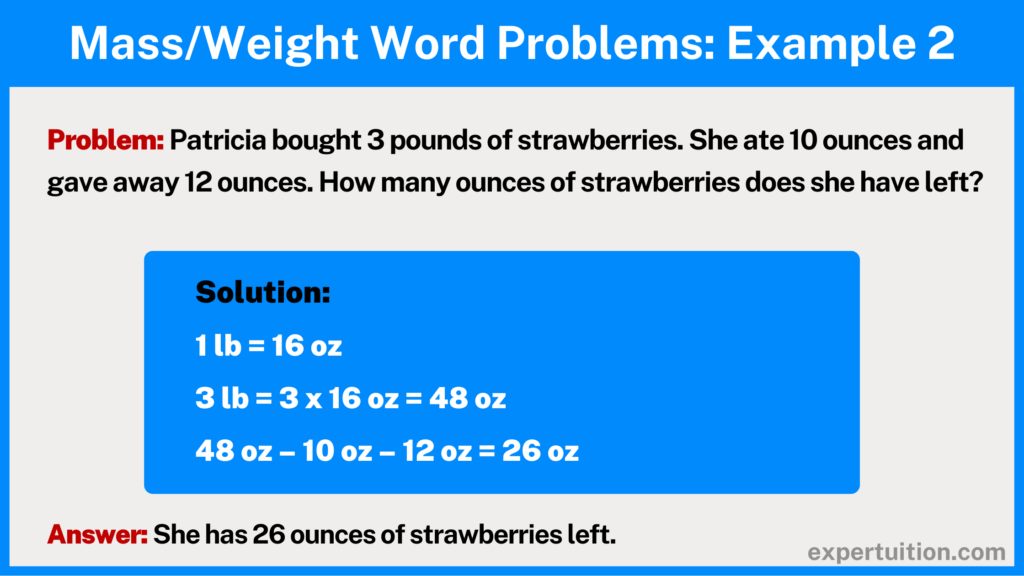
Money Word Problems
Example 1:
Kara’s dad gave her $70 to spend at the mall. She bought 2 dresses for $18 each and a hat for $7. How much money does Kara have left to spend at the mall?
Solution:
2 x $18 = $36
$36 + $7 = $43
$70 – $43 = $27
Answer: Kara has $27 left to spend at the mall.

Example 2:
Ms. Johnson went to the store. She bought two bags of pasta for $6.40 each and three packages of meat for $5.20 each. How much money did Ms. Johnson spend at the store?
Solution:
2 x $6.40 = $12.80
3 x $5.20 = $15.60
$12.80 + $15.60 = $28.40
Answer: Ms. Johnson spent $28.40 at the store.
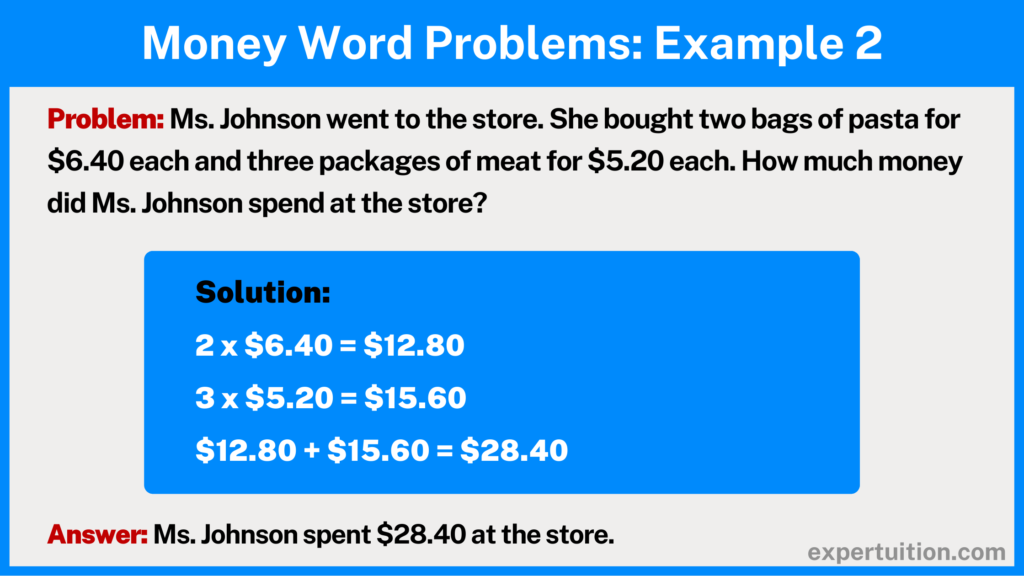
Measurement Word Problems Worksheets and Task Cards
To reinforce learning and provide additional practice opportunities, teachers can utilize worksheets and task cards specifically designed for measurement word problems.
These resources provide a variety of problem-solving scenarios, allowing students to apply their knowledge in various contexts and situations.
If you’re looking for engaging measurement word problem resources to use with your students, then my differentiated measurement word problem worksheets and task cards will be the perfect fit for you.
You can get these measurement word problem products from my TPT store or my WooCommerce shop.
Conclusion
Solving measurement word problems is an important skill for fourth and fifth grade students, as it lays the groundwork for more advanced math concepts.
This article discussed an effective strategy for solving measurement word problems with practice examples and resources tailored for fourth and fifth grade students.
Through consistent practice and engaging learning activities with diverse problem sets, teachers can help students gain confidence in applying measurement concepts to real-world situations.

